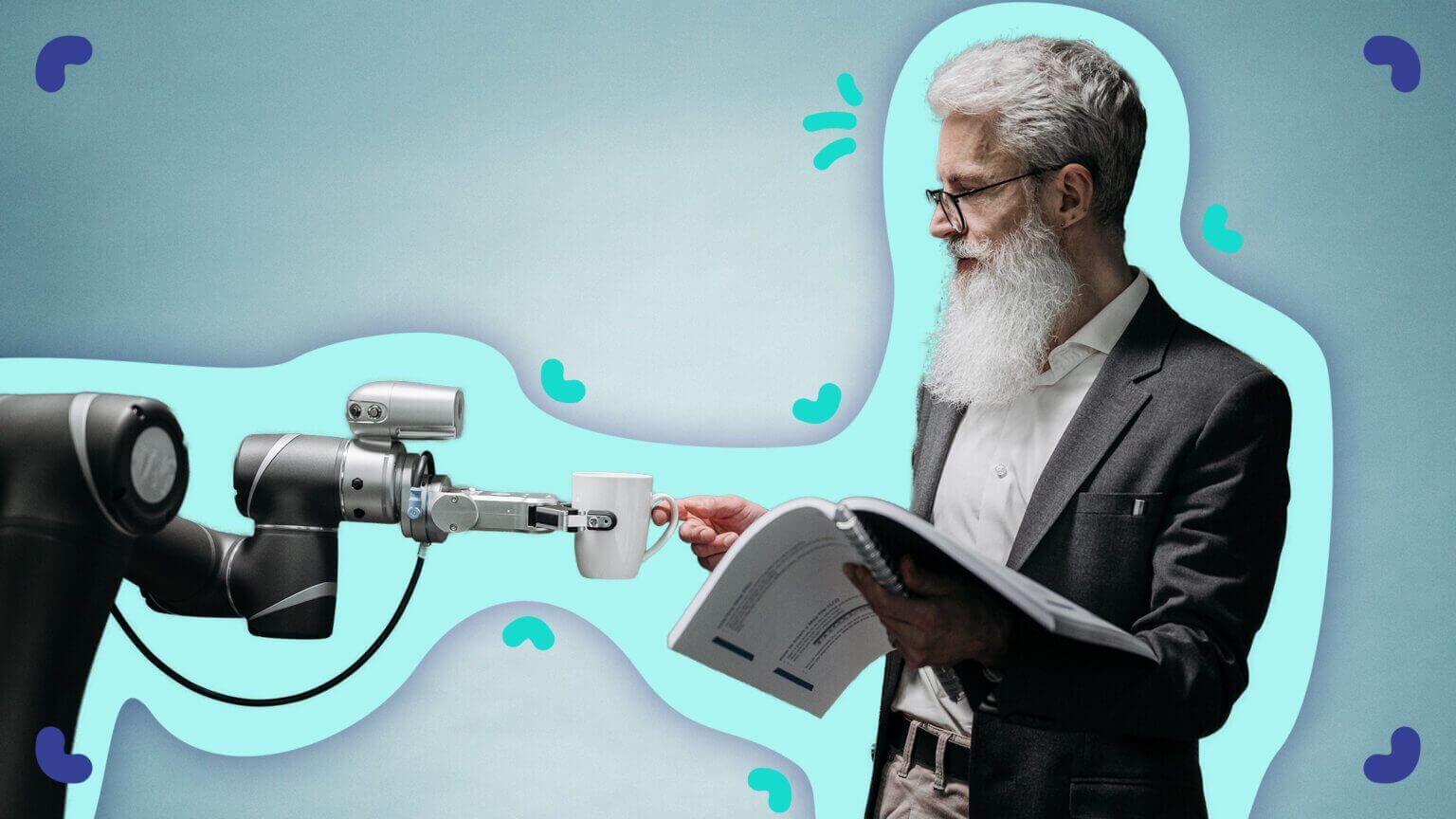If you’ve been online for more than one second this year, you couldn’t escape the news about AI, its rapid growth, and its potential. So, it goes without saying you’ve heard about its benefits, like saving time by speeding up mundane admin tasks.
But what would that look like in employee onboarding?
Whether you’re ready to optimize your onboarding process or just curious about how AI would work in HR, we’ve got you covered! Below, we’ll share a few ways to (and not to) use AI in onboarding.
Use cases of AI in employee onboarding
TL;DR: AI and employee onboarding can actually co-exist! 🤝 Let’s look at some of its use cases here.
1. Create onboarding policies and procedures
Documented onboarding processes are necessary — after all, no one likes to create the same document from scratch each time they need it. 😵💫
But even creating them once can get pretty tedious.
What if there was a way that you could document your process without starting from scratch? Luckily, one way you can do this is with AI! You can share the information you want your onboarding policy or procedure to include, and AI creates a fleshed-out document that you can use as a starting point or as a finished document.
For example, Whale’s AI Assist feature can help you save time and create a High-Level dress code policy that you can customize to your workplace requirements. Or you can create a Detailed procedure for creating email signatures in Gmail.

2. Answer new hire questions
Chances are that even new hires in senior positions will have questions about your company that your employee handbook didn’t cover.
Possibly after hours on a Saturday when they’re thinking back on their week.
And since they don’t have access to you 24/7, they’ll need somewhere to get these questions answered.
That’s where AI-powered chatbots and search come in. And according to a survey by Userlike, 68% of respondents appreciate how quickly chatbots respond to them.
These AI-powered tools can use your employee onboarding data to answer questions that align with your existing policies and procedures. Plus, as a bonus, if you see employees asking the same questions your existing database doesn’t have information on, you’ll know what content you need to create to help improve their experience.
Rodrigo Vázquez Mellado from SelectSoftware Reviews, a company that tests and reviews HR tools, suggests another way AI can assist new hires. “A more forward-thinking case is a custom-made Chat GPT-like bot that interacts with the candidate through the entire onboarding process. If this bot is trained on all the company info that a new hire needs to know, the whole process can be more interactive,” he said.
3. Personalized learning pathways
We can all agree that onboarding isn’t a one-size-fits-all activity. But — by a show of hands — who also knows that creating a personalized learning pathway for each new hire is much easier said than done? ✋
That’s what makes AI a key player in this department. It can analyze the path of those in similar roles and customize it to fit them. Additionally, you can tell AI about your new hire, and it can create a personalized pathway that can best suit them.
4. Analyze data and make predictions
Another use case of AI in employee onboarding is that it can analyze your data. For example, it can analyze feedback from your onboarding surveys, identify patterns, and make predictions that you can use to optimize your process.
If you ask open-ended questions and frequently onboard new hires, you can use this to save time analyzing data.
5. Test employees' knowledge of onboarding material
The best way to make onboarding material sticky for new hires is to test their knowledge. And to save time, you can use AI to help create quizzes from your existing onboarding policies and procedures. Whale’s AI Quiz feature allows you to do just that and lets you decide on the following:
- Number of questions
- Amount of possible answers per question
- Difficulty of questions
For example, let’s say you wanted to test your new hire’s knowledge of your employee handbook. AI would comb through your material and automatically create questions, possible answers, and an answer sheet based on your settings in less than five minutes.
6. Tracks onboarding completion rate
Here’s the truth: Not every new hire will complete all their onboarding material. For most employees, it can feel overwhelming, especially during remote onboarding. Between signing documents and learning more about your company, it’s easy to see why they leave some material untouched.
However, by using employee onboarding tools like Whale, AI will automatically track the completion rate of each procedure and policy. Then, you can use this insight to see which material isn’t being consumed so you can update your content to increase employee engagement.

How to not use AI in onboarding
There’s a lot of uncertainty around AI — of course, for good reason. But we want to clear the air: AI is an amazing tool for your employee onboarding process, but it shouldn’t replace the human touch.
Should you use it to help make sense of all your onboarding data? Absolutely.
Should all onboarding questions be routed to your AI-powered chatbot and never addressed by a human?
❌ Noooooo
We’d strongly advise against that. In that same survey from Userlike, 77% said having the option to escalate to a human agent is the most important thing that companies who use chatbots get right.
The results speak for themselves.
Helping you with time-consuming processes and strategizing so you can create a better employee experience for your new hires is AI’s specialty. But nothing can outperform a human when it comes to interpersonal relationships, which is key for successful onboarding processes!
Bottom line?
The onboarding process can always be optimized to ensure new hires have a positive, lasting experience with your company from day one. With the explosion of AI within the last year, it can and will continue to help you streamline your onboarding experiences. This allows you to focus more on what matters — building long-term relationships with new employees.
Because what’s onboarding without the people in it? 🫶
If you’re ready to incorporate AI in your employee onboarding processes to create one that works while saving time, sign up for Whale for free today.







